A pharmacological profile of the aldehyde receptor repertoire in rat olfactory epithelium
- PMID: 14724183
- PMCID: PMC1664868
- DOI: 10.1113/jphysiol.2003.058040
A pharmacological profile of the aldehyde receptor repertoire in rat olfactory epithelium
Abstract
Several lines of evidence suggest that odorants are recognized through a combinatorial process in the olfactory system; a single odorant is recognized by multiple receptors and multiple odorants are recognized by the same receptor. However few details of how this might actually function for any particular odour set or receptor family are available. Approaching the problem from the ligands rather than the receptors, we used the response to a common odorant, octanal, as the basis for defining multiple receptor profiles. Octanal and other aldehydes induce large EOG responses in the rodent olfactory epithelium, suggesting that these compounds activate a large number of odour receptors (ORs). Here, we have determined and compared the pharmacological profile of different octanal receptors using Ca(2+) imaging in isolated olfactory sensory neurones (OSNs). It is believed that each OSN expresses only one receptor, thus the response profile of each cell corresponds to the pharmacological profile of one particular receptor. We stimulated the cells with a panel of nine odorants, which included octanal, octanoic acid, octanol and cinnamaldehyde among others (all at 30microM). Cluster analysis revealed several distinct pharmacological profiles for cells that were all sensitive to octanal. Some receptors had a broad molecular range, while others were activated only by octanal. Comparison of the profiles with that of the one identified octanal receptor, OR-I7, indicated several differences. While OR-I7 is activated by low concentrations of octanal and blocked by citral, other receptors were less sensitive to octanal and not blocked by citral. A lower estimate for the maximal number of octanal receptors is between 33 and 55. This large number of receptors for octanal suggests that, although the peripheral olfactory system is endowed with high sensitivity, discrimination among different compounds probably requires further central processing.
Figures
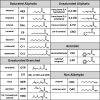
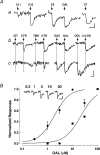
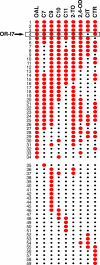
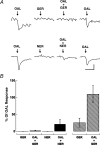


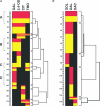
References
-
- Araneda RC, Kini AD, Firestein S. The molecular receptive range of an odorant receptor. Nat Neurosci. 2000;3:1248–1255. - PubMed
-
- Buck LB. The olfactory multigene family. Curr Opin Neurobiol. 1992;2:282–288. - PubMed
-
- Cometto-Muniz JE, Cain WS, Abraham MH. Nasal pungency and odor of homologous aldehydes and carboxylic acids. Exp Brain Res. 1998;118:180–188. - PubMed
Publication types
MeSH terms
Substances
LinkOut - more resources
Full Text Sources
Other Literature Sources
Miscellaneous

